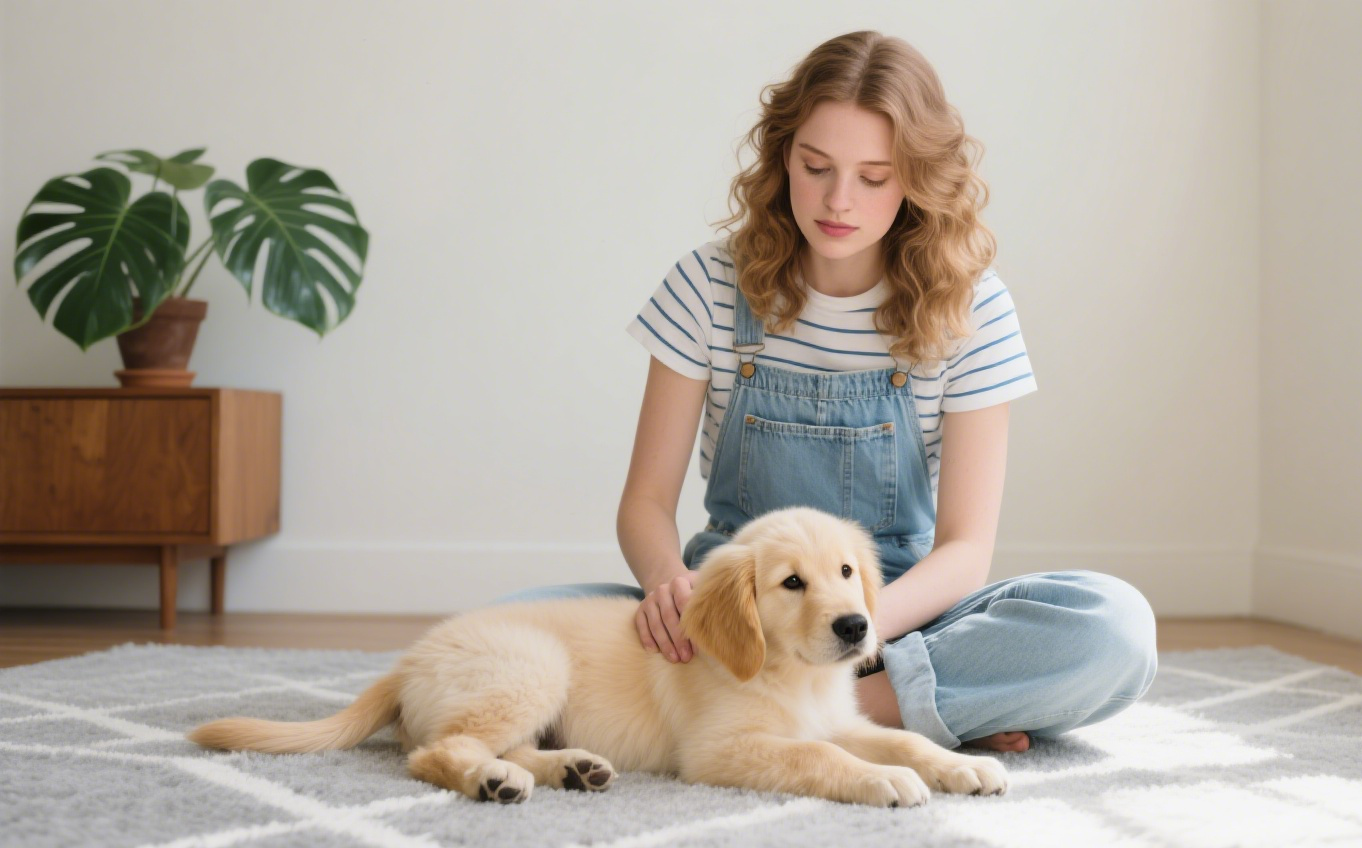We built PawPrinted’s dog food guide the same way we feed at home—calm, measured, and honest. Between Emma’s kitchen notes and our vet advisors, we learned that food choices land best when they’re simple, repeatable, and kind to the gut. This page is your map: what to feed at each life stage, how to choose ingredients, when to try special diets, and how to switch without drama. Every section links to deeper guides we’ve already tested with Ethan (our floppy-eared taste-tester).
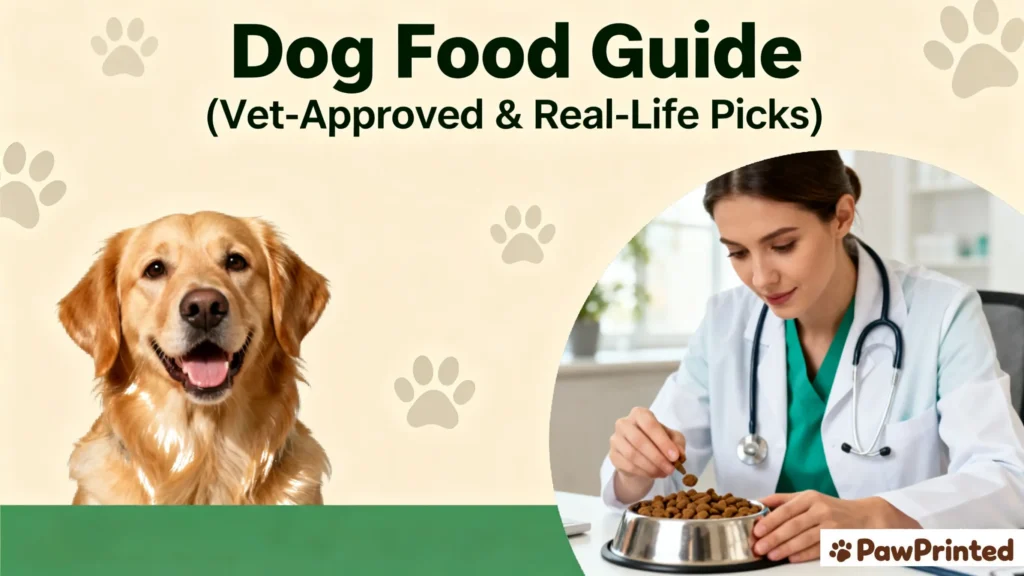
Red flag — call your vet: fast weight loss, chronic diarrhea or vomiting, black/tarry stools, repeated bloat symptoms, persistent itch with skin wounds, or sudden appetite changes. Nutrition helps, but red flags need a medical check first.
Dog Food Basics: Start With “Complete & Balanced”
On labels, look for a statement that the recipe is formulated to meet AAFCO nutrient profiles (growth, all life stages, or adult maintenance). That tells you the base is nutritionally complete. From there, think in four toggles: wet vs dry, ingredient focus, calorie density, and digestibility. If your dog has a sensitive stomach, start with gentle, predictable foods and change only one variable at a time. Our sensitive-stomach framework and brand-by-brand picks live here: Sensitive Stomach Dog Food Guide, plus targeted roundups for dry and wet.
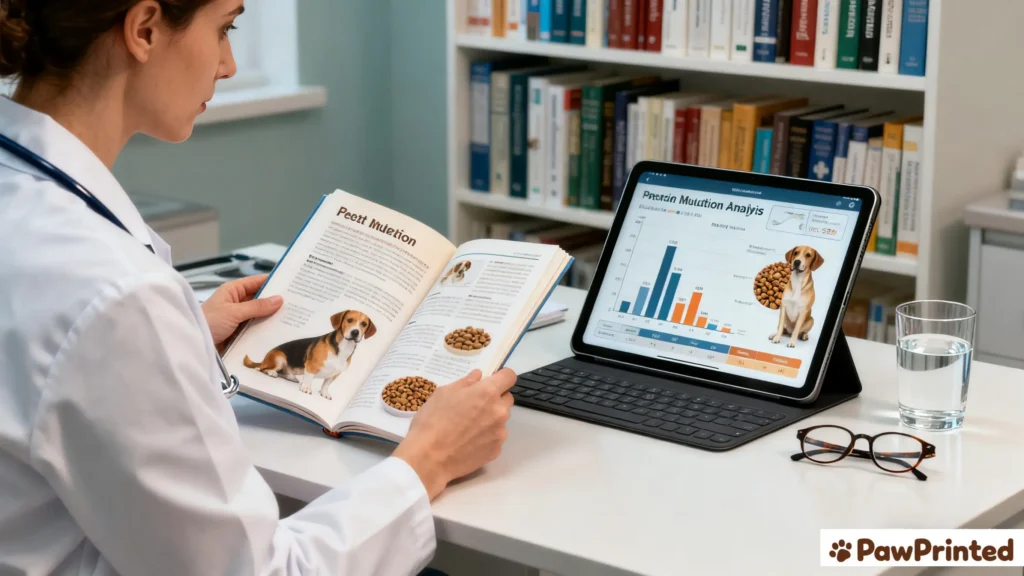
Life-Stage Nutrition (Puppy → Adult → Senior)
Puppies: They need growth-stage calcium, energy, and careful DHA support. We keep portions precise and avoid protein hopping. For families cooking at home, review our Homemade Puppy Food guide and the Raw for Puppies primer; for store-bought structure, see the Puppy Dog Food Hub.
Adults: This is where routine matters most. Choose a balanced base that your dog digests beautifully, then only layer small tweaks. If weight trends up, use our Weight Management picks and portion by calories, not scoops.
Seniors: Activity changes quietly, joints complain loudly. Aim for steady protein quality, controlled calories, and joint-smart extras. We keep an easy slow-cooker backup on hand so meals stay warm and gentle: Crockpot Dog Food for Senior Dogs. For store-bought structure, start at the Senior Dog Food Hub.
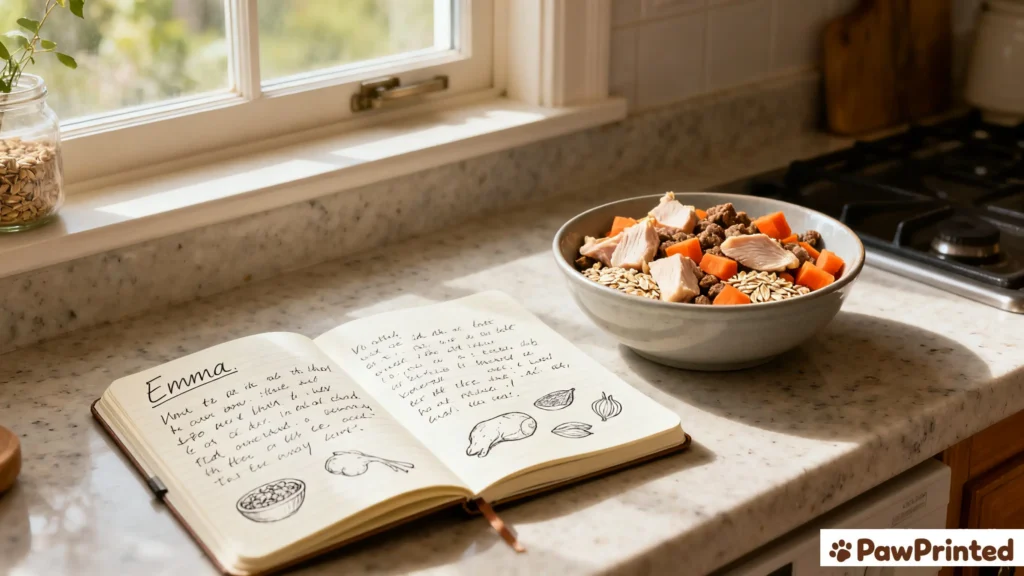
Ingredient-Based Choices (Protein, Carbs, and Add-Ons)
Choosing by ingredient is powerful when you’re tracking symptoms. Salmon can support coat and skin; turkey and chicken are lean, easy starters; rice and pumpkin calm many bellies. If your dog reacts to common proteins, try rabbit or venison. For deeper ingredient logic and sample menus, see our framework article: Ingredient-Based Dog Food, plus salmon-focused ideas in Salmon Dog Food and minimal-variable cooking in Homemade Limited-Ingredient.
| Choice | Why It Helps | Best Use Case |
|---|---|---|
| Turkey + Rice | Lean protein, predictable carb | First step for sensitive bellies |
| Salmon + Sweet Potato | Omega-3 + gentle fiber | Skin/coat support, mild itch |
| Lamb + Oats | Hearty, often palatable | Picky eaters needing energy |
| Rabbit + Pumpkin | Novel protein, gut-friendly | Suspected protein sensitivities |
Special Diets: When (and How) to Try Them
Limited-Ingredient Diets (LID): One protein + one carb, minimal extras, and lots of patience. Perfect when you’re chasing a trigger and want clear notes. See the big picture in LID Hub, or cook your own with Homemade LID.
Allergy-Focused: True food allergy diagnosis requires a proper elimination plan. Day-to-day, choose gentle, consistent formulas; our Allergies Hub explains the difference between allergy, intolerance, and atopy, and links to practical options.
Grain-Free vs Grain-Friendly: Grain-free isn’t a magic wand. Some dogs do well; others prefer rice or oats. Read our balanced take in Grain-Free Dog Food, and use the 7-day transition plan below to test changes.
Raw & Natural-Leaning: If you’re curious about raw, start with a safety-first mindset and a recipe that hits complete-and-balanced targets. Our introductions live in Raw Dog Food Guide and Natural Dog Food, with a puppy-specific take in Raw for Puppies.
Tip: Don’t change food, bowl, and schedule at the same time. Lock two variables; adjust one for 7–10 days; keep notes on stools, energy, and itch.
Wet vs Dry (and When to Use Both)
Dry: Easy to measure and store; works with slow-feeder bowls to pace eaters. Wet: Adds moisture and aroma; great for picky or senior dogs. Many families do a 70/30 or 50/50 split on tricky weeks. If digestion is fragile, see our targeted picks for dry and wet that behave nicely in the bowl and the yard.
Portions & Routine (Simple, Repeatable, Measurable)
Portion by calories, not cups, especially for small breeds and couch-potato weekends. Keep treats under 10% and count them in your total. If weight creeps up, reduce calories by ~10% for 2–3 weeks and re-check. For big dogs and seniors, pair calories with joint-support logic in Large Breeds and Senior Dog Food.
| Dog Size | Daily Calories (rough guide) | Notes |
|---|---|---|
| Toy (2–5 kg) | 200–350 | 3 smaller meals help some toy breeds |
| Small (5–10 kg) | 350–600 | Measure treats; aroma helps picky eaters |
| Medium (10–25 kg) | 600–1,100 | Use slow-feeders for gulpers |
| Large (25–40 kg) | 1,100–1,600 | Watch joints; avoid rapid weight swings |
| Giant (40 kg+) | 1,600–2,400 | Multiple smaller meals may reduce bloat risk |

7-Day Food Transition Plan
Switch gradually to protect the gut. Keep schedule, water, and activity steady while you adjust the bowl.
| Day | Old Food | New Food | What to Watch |
|---|---|---|---|
| 1–2 | 75% | 25% | Stool shape, appetite |
| 3–4 | 50% | 50% | Gas/bloat, itch changes |
| 5–6 | 25% | 75% | Energy, post-meal calm |
| 7+ | 0% | 100% | Re-weigh in 2 weeks |
If transition stalls: hold the ratio for 48 hours, add a spoon of pumpkin, and reassess. If diarrhea or vomiting persists, consult your vet and review Dog Food for Diarrhea.
Targeted Guides (Navigate by Need)
Homemade (And When to Use It)
Homemade shines when you need control and calm. Keep recipes simple, stay “notes-first,” and don’t skip balance. Our most used formats: Crockpot Dog Food for bulk prep, Homemade for Sensitive Stomach when the gut needs a reset, and Homemade Dog Treats to keep training soft on digestion.
If you don’t want to cook daily, pick one gentle dry base that your dog loves and use wet food or homemade toppers sparingly. Predictability beats perfection.
Common Problems (Quick Routes)
Gas & Bloating: Slow the eating, simplify ingredients, and mind portions. Our step-by-step is here: Gas & Bloating Relief Guide.
Skin & Coat: Try salmon-based formulas or limited-ingredient meals with Omega-3s. See Sensitive Skin and Salmon Dog Food.
Picky Eaters: Keep meals small and aromatic, and test wet/dry layering. Our calm plan: Picky Eaters.
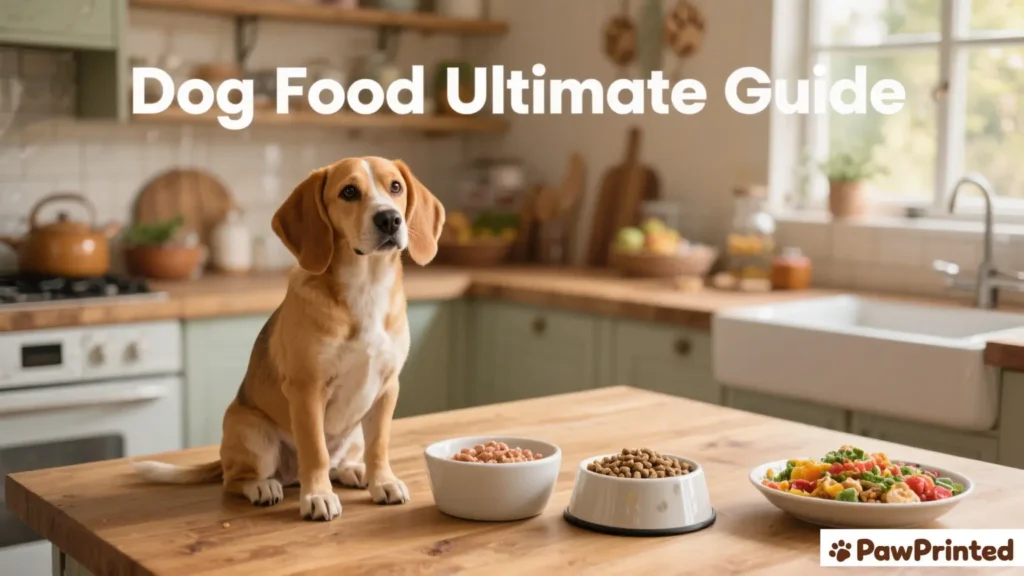
FAQ
Wet or dry—how do I choose?
Pick the format your dog digests best and that you can measure reliably. Dry makes portions easy; wet boosts moisture and aroma. Many families mix both. For gentle options, see our dry and wet picks.
Should I go grain-free?
It depends on your dog. Some thrive on rice or oats; others do well grain-free. Choose predictability first, then test with our 7-day transition. Read the balanced pros/cons in Grain-Free Guide.
What is a limited-ingredient diet?
One protein + one carb with minimal extras to reduce triggers and make notes clear. Start in our LID Hub or try a simple homemade LID.
How do I set portions?
Use calories, not scoops. Re-weigh in 2–3 weeks and adjust by ~10% if needed. If weight control is the main goal, start here: Weight Management.
How do I switch foods safely?
Follow a 7-day ratio (75/25 → 50/50 → 25/75 → 100%) and hold steady if stools soften. Full walkthrough: Dog Food Transition Guide.
Can I cook at home without upsetting digestion?
Yes—keep recipes simple, measure, and avoid hopping proteins. Our starters: Crockpot Dog Food and Homemade for Sensitive Stomach.
Follow PawPrinted on Pinterest
We post calm feeding routines, ingredient swaps, and step-by-step charts you can save.

